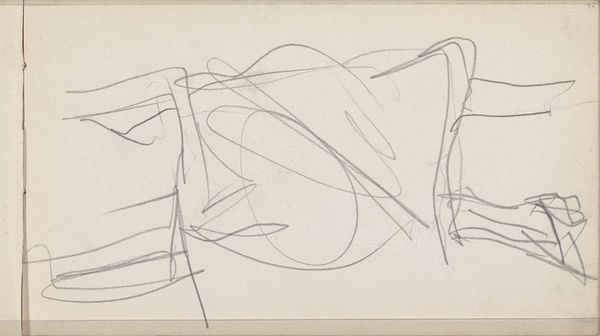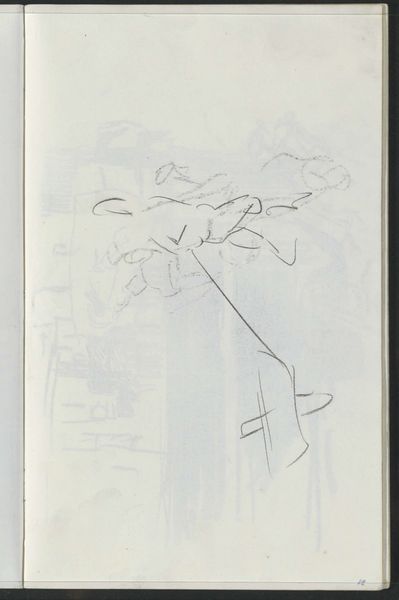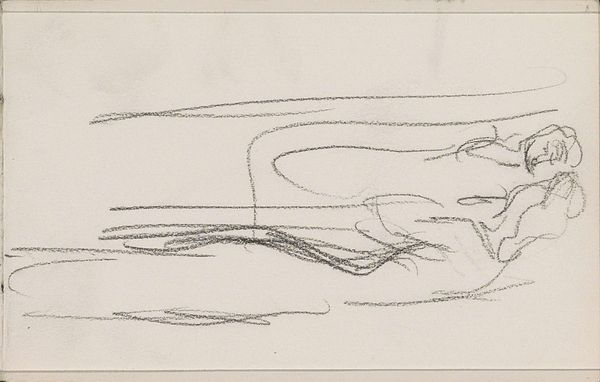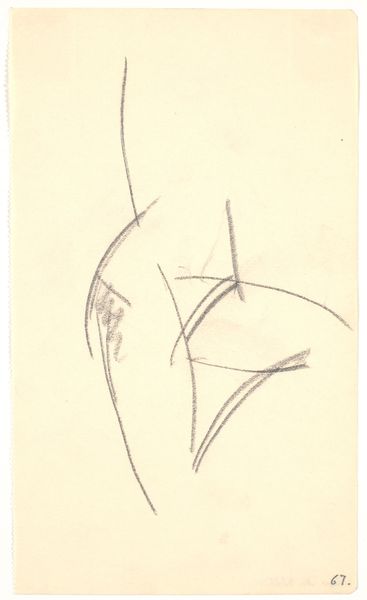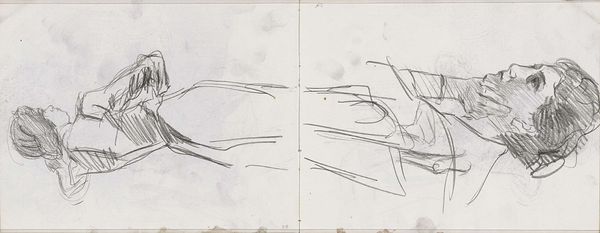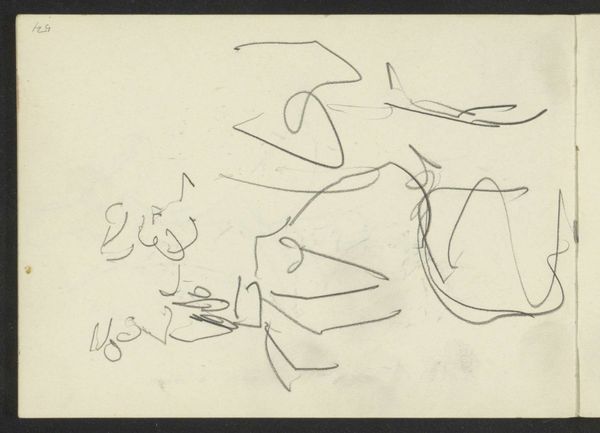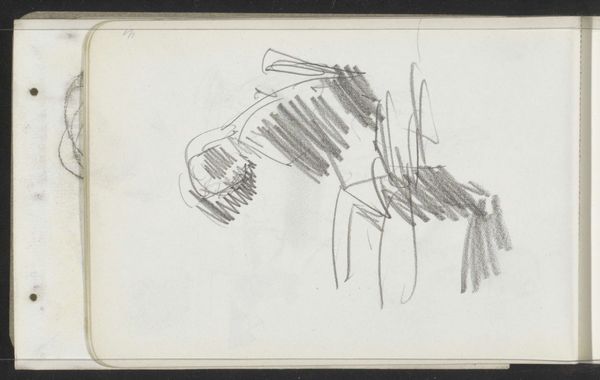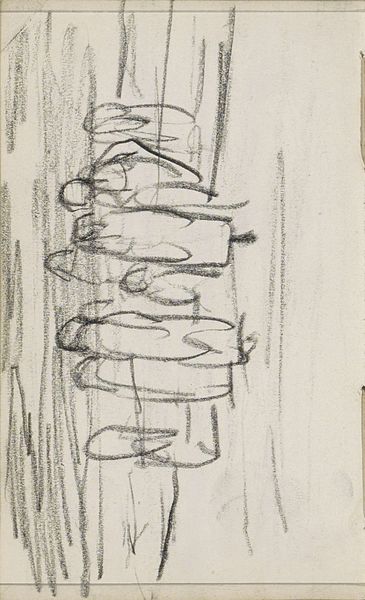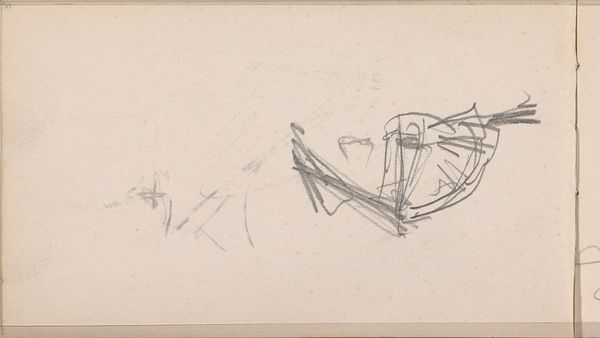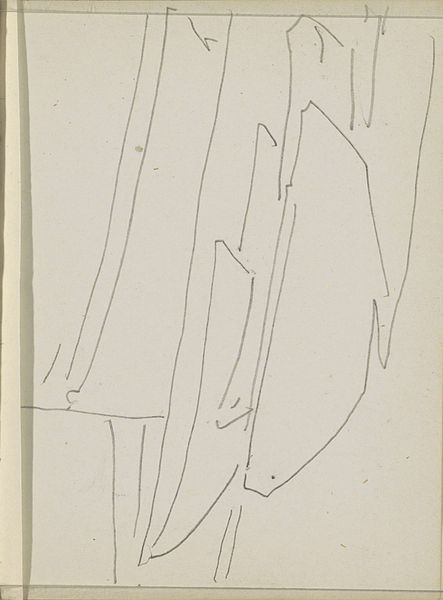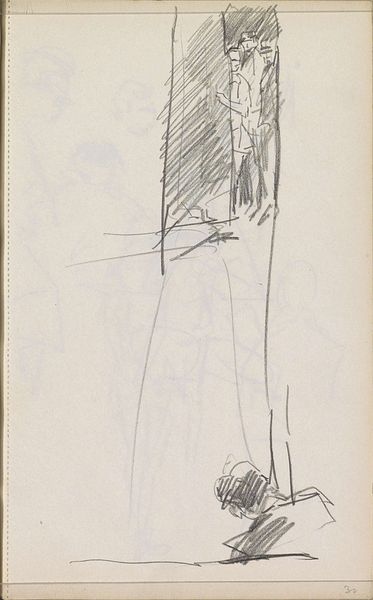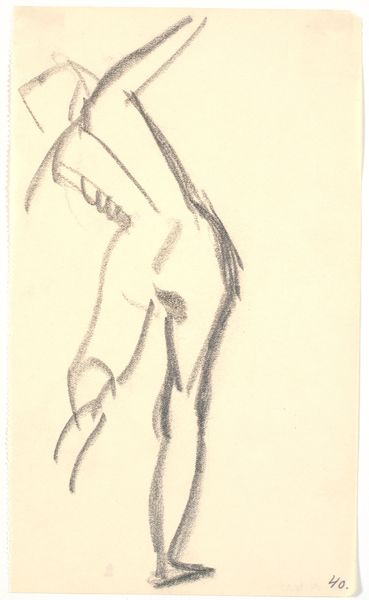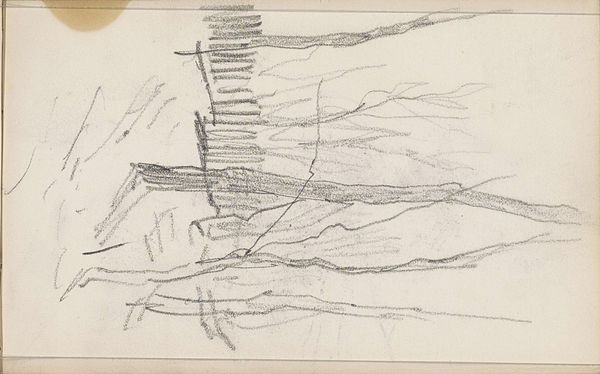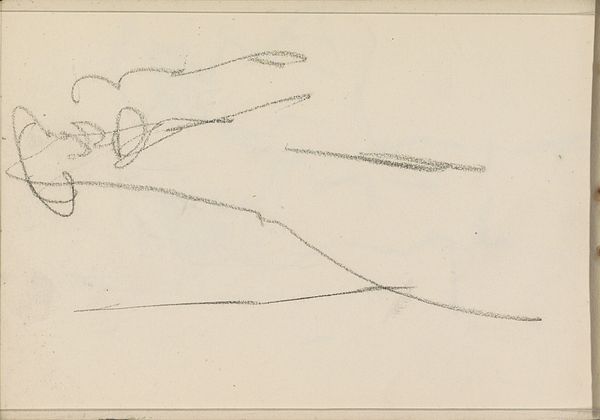![Selbstportrait mit Dämon (Self-Portrait with Demon) [p. 19] by Max Beckmann](/_next/image?url=https%3A%2F%2Fd2w8kbdekdi1gv.cloudfront.net%2FeyJidWNrZXQiOiAiYXJ0ZXJhLWltYWdlcy1idWNrZXQiLCAia2V5IjogImFydHdvcmtzL2E0MTMwMjE5LWYyNmQtNDVhMy05MDU5LTNjMDVjZTc5Y2QyNS9hNDEzMDIxOS1mMjZkLTQ1YTMtOTA1OS0zYzA1Y2U3OWNkMjVfZnVsbC5qcGciLCAiZWRpdHMiOiB7InJlc2l6ZSI6IHsid2lkdGgiOiAxOTIwLCAiaGVpZ2h0IjogMTkyMCwgImZpdCI6ICJpbnNpZGUifX19&w=1920&q=75)
drawing, pencil
#
portrait
#
drawing
#
self-portrait
#
pencil
#
expressionism
Copyright: National Gallery of Art: CC0 1.0
Curator: Here we have a quick, restless sketch by Max Beckmann. The work is titled "Self-Portrait with Demon," executed with pencil. Editor: My immediate reaction is unease. There’s a frantic energy to the lines, a raw vulnerability that’s quite unsettling, as though we're witnessing an internal struggle. Curator: Yes, exactly. Beckmann consistently explored the fractured self, didn’t he? The "demon" here acts less as a literal entity and more as a symbol of inner conflict and torment. It mirrors his personal struggles but also reflects the broader anxieties of the early 20th century. Editor: Given the societal backdrop of pre-war anxieties in Germany and the growing rise of nationalist tensions, you think this is about the inner turmoil he experienced navigating his own identity amid political shifts? Curator: Undoubtedly. Beckmann was deeply concerned with the state of society, and that comes across in the psychological depth of his portraits and allegories. He's grappling with personal demons that seem inextricably linked to the cultural and political environment. You see in this rough sketch a reflection of a collective consciousness facing darkness. Editor: There’s also something unnerving in how unresolved this sketch seems. As if whatever he's fighting won't let him have closure. And in that incompleteness lies its power – it becomes less about the man Beckmann and more about any man facing his shadow self. Curator: Right, the incompleteness is crucial. It invites us into the process, allowing us to complete the picture with our own anxieties and interpretations. It isn't so much about representation, as it is about the symbolic struggle with identity under societal pressures. It's an ongoing performance, a never-ending battle for control. Editor: It serves almost as a Rorschach test reflecting social and historical anxieties onto a fragmented portrait. Fascinating to consider its relevance even today. Curator: Precisely. Through simple strokes, it portrays the universality of human struggle across any social era. A raw depiction indeed!
Comments
No comments
Be the first to comment and join the conversation on the ultimate creative platform.
